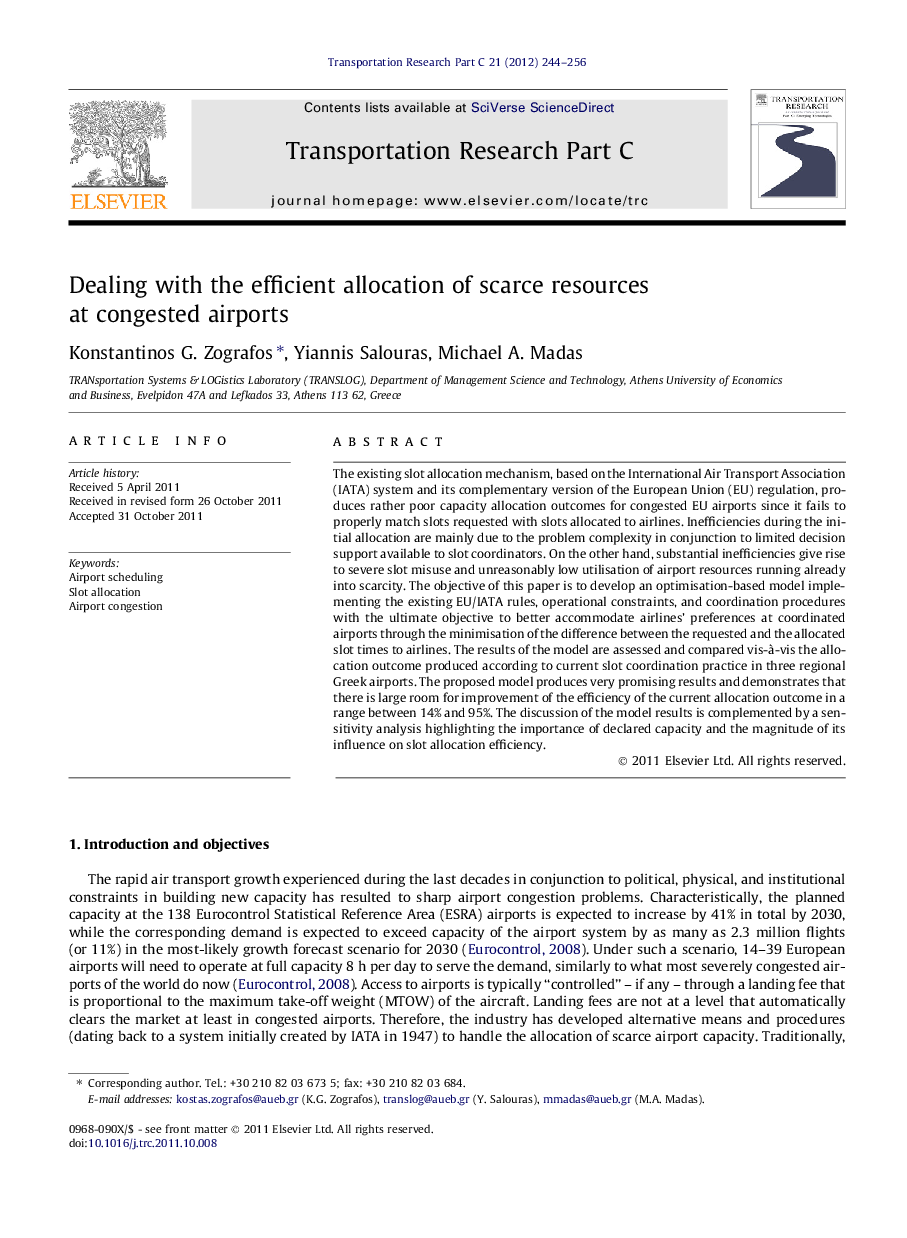| Article ID | Journal | Published Year | Pages | File Type |
|---|---|---|---|---|
| 525427 | Transportation Research Part C: Emerging Technologies | 2012 | 13 Pages |
The existing slot allocation mechanism, based on the International Air Transport Association (IATA) system and its complementary version of the European Union (EU) regulation, produces rather poor capacity allocation outcomes for congested EU airports since it fails to properly match slots requested with slots allocated to airlines. Inefficiencies during the initial allocation are mainly due to the problem complexity in conjunction to limited decision support available to slot coordinators. On the other hand, substantial inefficiencies give rise to severe slot misuse and unreasonably low utilisation of airport resources running already into scarcity. The objective of this paper is to develop an optimisation-based model implementing the existing EU/IATA rules, operational constraints, and coordination procedures with the ultimate objective to better accommodate airlines’ preferences at coordinated airports through the minimisation of the difference between the requested and the allocated slot times to airlines. The results of the model are assessed and compared vis-à-vis the allocation outcome produced according to current slot coordination practice in three regional Greek airports. The proposed model produces very promising results and demonstrates that there is large room for improvement of the efficiency of the current allocation outcome in a range between 14% and 95%. The discussion of the model results is complemented by a sensitivity analysis highlighting the importance of declared capacity and the magnitude of its influence on slot allocation efficiency.
► We develop an optimisation model implementing the existing EU/IATA slot allocation. ► The objective is to better accommodate airlines’ slot preferences at coordinated airports. ► It is achieved by minimising the difference between requested and allocated slot times. ► The slot allocation efficiency improves in a range between 14% and 95%. ► The setting of declared capacity has substantial influence on allocation efficiency.
